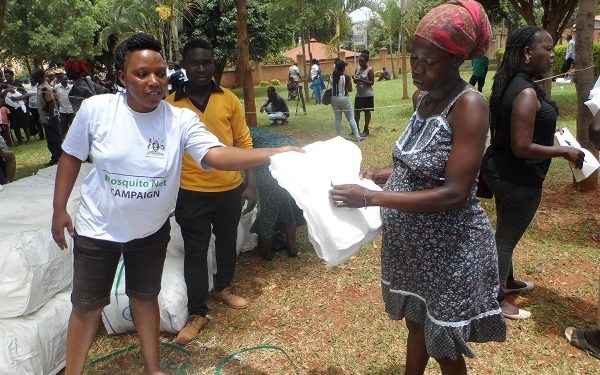Malaria remains Uganda’s leading cause of morbidity and mortality leading to serious economic and
social consequences.
Malaria is highly endemic in over 95% of the country, with all year round transmission. Available
information indicates that malaria accounts for about 25-40% of all out-patient visits to health
facilities, 20% of admissions and 14 % of in-patient deaths (Ministry of Health, 2004).
The estimated annual number of deaths attributable to malaria in Uganda, ranges from 70,000 to
100,000. Children below five years are most affected by malaria; nearly half of hospital inpatient
paediatric deaths are due to malaria (Ministry of Health, 2004). This is a highly regrettable situation
because Malaria is a preventable disease.
Many factors have contributed to this high burden of malaria in Uganda, including; limited access to
personal protection measures from mosquito bites, limited access to adequate treatment in the formal
health facilities and increased resistance of malaria parasites to the previously cheap and effective
anti-malarial drugs resulting in increased treatment failures.
Insecticide-treated nets (ITNs) have been shown to reduce the burden of malaria in children by
providing personal protection from the mosquito vectors. Regular use of ITNs by young children can
reduce the overall risk of dying by 20%, and the number of clinical malaria episodes by 50% (WHO,
2002).
The Ministry of Health (MoH) mosquito net policy recommends free net distribution to be targeted
to low socioeconomic populations and internally displaced persons (IDPs), because these categories
have limited purchasing power and may not afford to access nets from the commercial sector.
The Uganda Program for Human and Holistic Development (UPHOLD), a five year USAID-funded
project has been supporting the MoH’s anti-malaria efforts since 2003. In March 2005, UPHOLD
conducted a focus for impact analysis, aimed at identifying crucial interventions capable of having
meaningful results, if implemented on a large scale. Malaria prevention and control intervention
were identified as one of the important areas for focus for impact. This analysis indicated that
260,000 ITNs were required in order to increase ITN coverage for children below five years by 15%.
A decision was made to purchase long lasting insecticidal nets (LLINs), because they would offer protection for a longer period without requiring re-treatment. These nets under the free mosquito nets campaign has seen the Ministry of Health cover nearly the whole of Uganda ensuring households vulnerable to malaria infections receiving mosquito nets.





